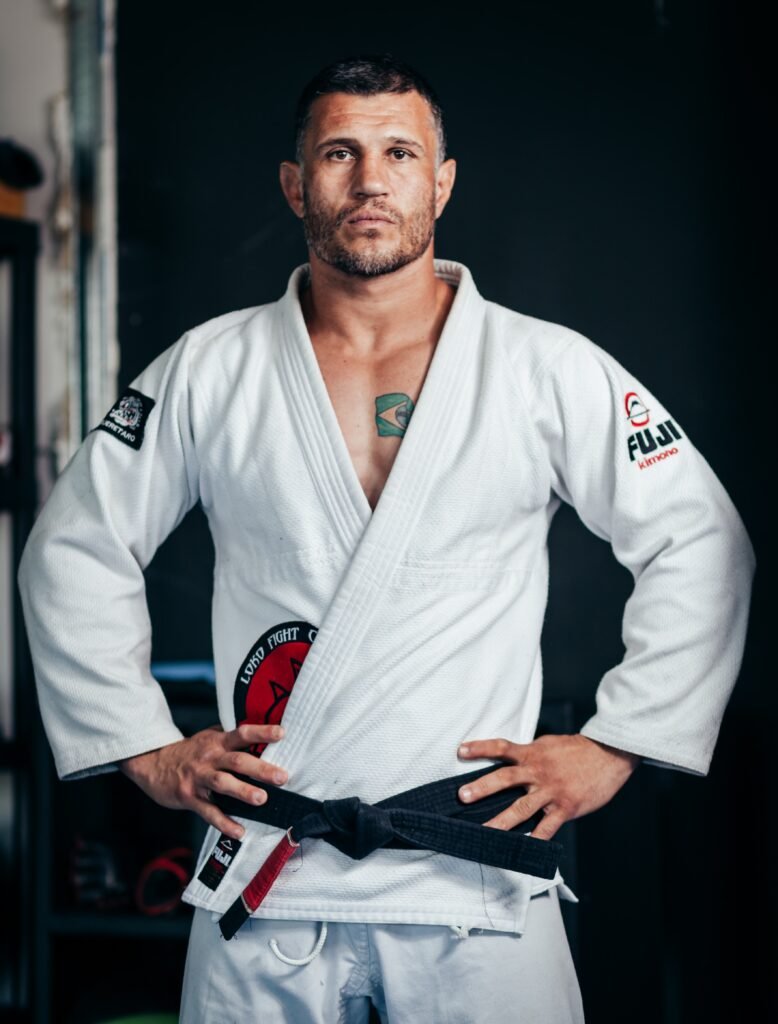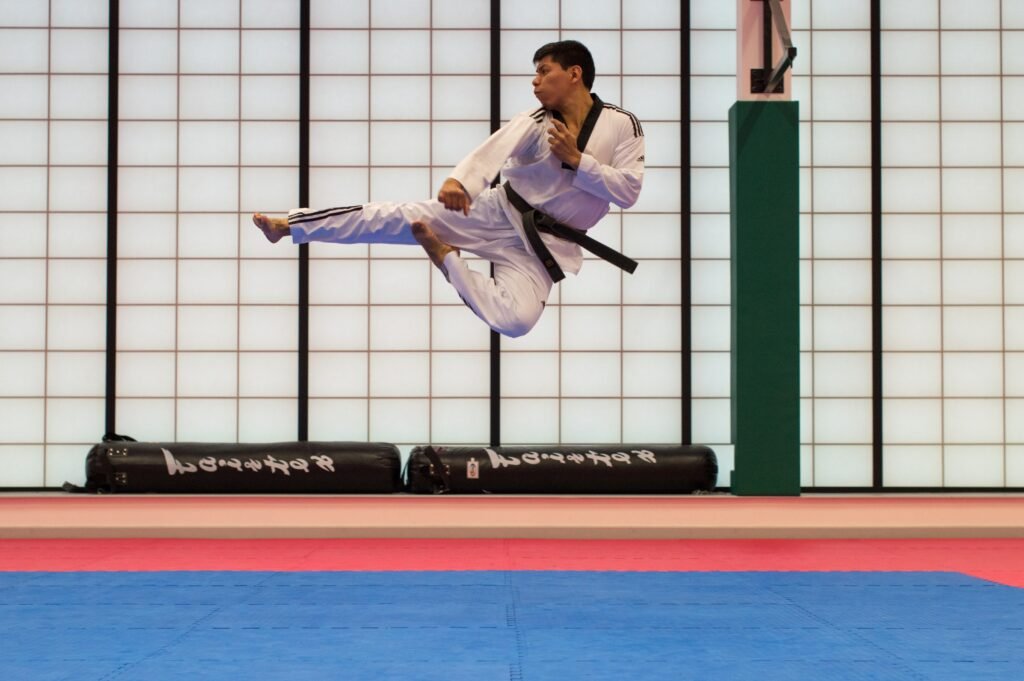In this article, you will discover the fascinating world of Judo Martial Arts. Whether you are already a martial arts enthusiast or simply curious about learning a new skill, Judo offers a unique blend of physical training and mental discipline. Through the practice of this modern Korean style martial art, you can develop your physical strength, sharpen your self-defense skills, and boost your confidence. If you are ready to embark on an exciting journey of self-discovery and personal growth, look no further than Judo Martial Arts. Visit USHRK Kumdo & Kendo today to explore the best martial arts training near you.
What Is Judo Martial Arts
Judo is a modern Japanese martial art that primarily focuses on throws and grappling techniques. The word "Judo" can be translated as "gentle way," emphasizing the principle of using an opponent's strength and momentum against them. Developed in the late 19th century by Jigoro Kano, Judo combines physical techniques with philosophical and moral principles. It is not just a sport but also a way of life, promoting personal development, discipline, and respect.
Origin and History of Judo
Judo has its roots in the ancient Japanese martial arts of Jujutsu. Jujutsu techniques were designed to defend against armed opponents in a battlefield context. However, Jigoro Kano revolutionized these techniques when he founded Judo in 1882. Kano sought to create a martial art that focused on self-improvement and used leverage and technique to overcome brute strength. He formalized Judo's techniques and principles, transforming it into a martial art suitable for everyday practice.
Principles and Philosophy of Judo
Judo is guided by two fundamental principles: "Maximum Efficiency" and "Mutual Welfare and Benefit." Maximum Efficiency entails using the least amount of physical strength to achieve the greatest possible effect. By applying throws, joint locks, and pins, a judoka (practitioner of Judo) can utilize an opponent's energy against them. Mutual Welfare and Benefit emphasize the importance of respecting and assisting one another both on and off the mat. Judo teaches individuals to develop their physical abilities while also contributing to the well-being of their training partners and society at large.

Basic Techniques in Judo
Judo encompasses a wide range of techniques, including throws, pins, chokes, and joint locks. Throws, or "nage waza," are the hallmark of Judo and involve using an opponent's momentum to off-balance and take them to the ground. There are various throwing techniques, such as Osoto Gari (major outer reap) and Seoi Nage (shoulder throw), each utilizing different principles of leverage and timing. Pins, or "osaekomi waza," involve holding an opponent on the ground for a set period of time to secure a victory. Chokes and joint locks, known as "shime waza" and "kansetsu waza," respectively, aim to immobilize or submit an opponent. Mastery of these techniques requires diligent practice, timing, and an understanding of body mechanics.
Judo Uniform and Equipment
When practicing Judo, participants wear a specific uniform called a "judogi." The judogi consists of a jacket, pants, and a belt. The jacket, or "uwagi," is made of heavy-duty cotton and designed to withstand intense grappling and pulling. The pants, or "zubon," are also made of durable cotton and feature reinforced knees to withstand kneeling and throwing motions. The belt, or "obi," signifies a practitioner's rank and level of expertise. Judo practitioners also wear a cotton undershirt, known as a "juban," for hygiene purposes. No shoes or footwear are allowed on the mat during Judo training.

Judo Dojo Etiquette
Respect and discipline are essential aspects of training in Judo. When entering a Judo training facility, known as a "dojo," it is customary to bow as a sign of respect. Proper hygiene, such as clean gi (uniform) and trimmed nails, is also important. During practice, participants adhere to a strict code of conduct, known as "dojo etiquette." This includes listening attentively to the instructor (sensei), avoiding disruptive behavior, and showing respect to training partners. The dojo is a place where individuals come together to learn, practice, and grow, and maintaining a respectful and disciplined atmosphere is key.
Judo Ranking System
Judo uses a ranking system to recognize and differentiate practitioners' skill levels. The ranking system is denoted by different colored belts, starting with white for beginners and progressing through various colors, such as yellow, orange, green, blue, brown, and ultimately black. Each belt level signifies a judoka's knowledge, experience, and proficiency in executing techniques. Advancement through the ranks is typically determined through regular training, practical examinations, and competition performance. Achieving a black belt requires significant dedication, commitment, and mastery of Judo's techniques and principles.

Competitions and Olympic Judo
Judo is not only practiced as a recreational activity but also as a competitive sport. At the international level, Judo competitions bring together athletes from around the world to showcase their skills and techniques. The International Judo Federation (IJF) governs these competitions, setting standards for rules, regulations, and fair play. Judo made its debut as an Olympic sport at the 1964 Tokyo Olympics and has since become one of the most popular and widely recognized martial arts in the Olympic Games. Olympic Judo competitions provide a thrilling platform for athletes to test their abilities, representing their countries on the global stage.
Health and Fitness Benefits of Judo
Engaging in Judo offers numerous health and fitness benefits. The physical demands of Judo training provide an excellent cardiovascular workout, improving endurance and stamina. Judo also enhances flexibility, strength, and coordination through dynamic movements and intense grappling. The throwing techniques in Judo promote the development of explosive power and agility. Regular practice of Judo can lead to increased muscle tone, improved posture, and overall body awareness. Additionally, Judo fosters mental discipline, concentration, and stress management, promoting a healthy mind-body connection.
Judo for Self-Defense
One of the core applications of Judo is its effectiveness as a self-defense system. Judo techniques allow individuals to neutralize and subdue attackers using their opponent's energy and momentum. As Judo emphasizes leverage and technique over physical strength, it provides a practical self-defense method for individuals of all ages and sizes. By learning how to properly execute throws, joint locks, and pins, individuals can defend themselves against larger and stronger assailants. Judo training also instills confidence, situational awareness, and the ability to remain calm under pressure - all valuable skills for self-defense scenarios.
Judo for Children and Women
Judo is a martial art suitable for individuals of all ages and genders. Children can benefit greatly from practicing Judo, as it promotes discipline, focus, coordination, and teamwork. Judo instills valuable life skills such as respect, self-confidence, and perseverance in young practitioners. Furthermore, Judo's emphasis on technique and leverage ensures that children can train and compete safely without relying on brute strength. For women, Judo offers a means of self-defense, physical fitness, and empowerment. Through Judo training, women can develop greater body awareness, self-confidence, and the ability to protect themselves if necessary.
In conclusion, Judo is a dynamic martial art that combines physical techniques with philosophical principles. It offers a holistic approach to personal growth, emphasizing efficiency, discipline, and respect. Whether for self-defense, competition, or overall health and fitness, Judo provides numerous benefits for practitioners of all ages and backgrounds. So why not step onto the mat, join a Judo dojo, and embark on a journey of self-improvement and discovery?














